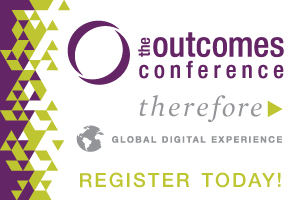
Multi-generational Fundraising By Stinnett, Petraglia & Steck
Learn the Multi-generational Perspectives on Fundraising
These days we are challenged to think multi-generational! Here you will find three different perspectives written by contributors from three different generations. We examine the impact that Millennials, Generation Xers, and Baby Boomers have had on fundraising, and how to best target them in your direct response communications.
The Millennial Mystery
Let’s begin with the youngest perspective in our multi-generational perspective on fundraising.
Millennials (born between 1981 and 1996) are blossoming into the largest generation by population and are expected to surpass Baby Boomers (born between 1943 and 1964) this year. Yes, the Boomers.
Yet despite Millennials embracing technology, social activism, and wanting to make a tangible difference in the world, one thing hasn’t changed between generations—the life cycle of donors and their capacity to give.
Generally speaking, Millennials are not in the financial position to support your organization in the way that Baby Boomers or Generation Xers (born between 1965 and 1980) currently do, so you need to find different ways to engage this audience.
Remembering that this current generation has grown up on a steady diet of social media, it’s advisable to begin by focusing on building relationships in the digital space. Reach Millennials where they are, speak their language, and give them opportunities to contribute outside of a financial commitment. These are passionate advocates and great volunteers and will even give small gifts as they are able. Your end game is to get them engaged and keep them engaged especially as they, and their giving potential, matures.
X Marks the Spot
Next up to help us shape our multi-generational perspective on fundraising is Generation X.
While Generation X has largely been overshadowed by the philanthropic prowess of Boomers and the giving potential held by Millennials, this is a generation of donors that is predicted to exceed the charitable giving of Boomers within the next 10 years.
With Generation X donors poised to become your most profitable donors, your communication strategies must evolve too. The bottom line is that if you’re still using the same direct response approach you were a few decades ago, then you may not be equipped to reach them.
Gen Xers are a generation of skeptics, holding a unique ability to respond to direct mail as well as in digital mediums. A multi-channel communication plan is the key to getting them to respond.
Include Generation X donors in both your direct mail and digital streams and follow up your appeals with a prompt report. Remember, this is a generation that is both savvy and skeptical, so they want to know their money is being prudently used and see their gifts making an impact.
Generation Xers have the capacity and the desire to move your mission forward so tailor your communications with that hope in mind.
Boomers are Still Booming
And rounding out our multi-generational perspective is the boomers!
Having concerns about reaching a younger demographic is nothing new. Only today, the groups are different. The fundraising conversations heard within every non-profit during the 1980’s was:
“What are we going to do when our older donors retire or can no longer give?”
As organizations worked to find a way to supplement the income gleaned from the Silent Generation (born between 1927 and 1946), the biggest challenge they faced was an upcoming generation (the Boomers) that seemed disinterested in supporting nonprofits (sound familiar?).
Yet despite the worry, it was the wise and experienced voices that were heard saying, “The next generation will be great donors when they get old enough!” And they were right.
History shows that when a demographic reaches their late 40s/early 50s they want to make a lasting difference in the world and will give generously to see that happen. To attract these profitable donors, you need to be ready, agile, and have a trusted fundraising counsel providing you with guidance and direction. Are you ready to think multi-generational in your approach to fundraising?
####
Wiley Stinnett is the Executive Creative Director and Senior Vice President, Strategy and Insights at Douglas Shaw & Associates. Wiley’s 34 years of highly successful direct response fundraising experience provides clients with a wealth of proven strategic insights and ideas based on real-world experience with dozens of ministries. Wiley continues to utilize direct mail, web, digital, radio, television, and events in maximizing the income and growth of all Douglas Shaw & Associates clients.
Adam Petraglia is an Associate Consultant at Douglas Shaw & Associates. His strong heart for service, project management skills, and focus on walking alongside his clients has continued to help deliver outstanding results for those he serves.
Jonathan Steck is the Creative Director for Douglas Shaw & Associates. He is an innovative fundraising professional who brings over a decade of direct response copywriting, design, and creative experience to Douglas Shaw & Associates. A native of Australia, Jonathan is passionate about storytelling and using his direct response skills to help people succeed, and organizations grow.

SUMMER TERM 2019 REGISTRATION IS OPEN
Registration Deadline: June 17, 2019
Modules Begin: June 24, 2019

What is Christian Leadership Alliance?
Christian Leadership Alliance equips and unites leaders to transform the world for Christ. We are the leaders of Christ-centered organizations who are dedicated to faithful stewardship for greater kingdom impact.
Sign up for FREE blog updates.
Upcoming Events
Check back later!



